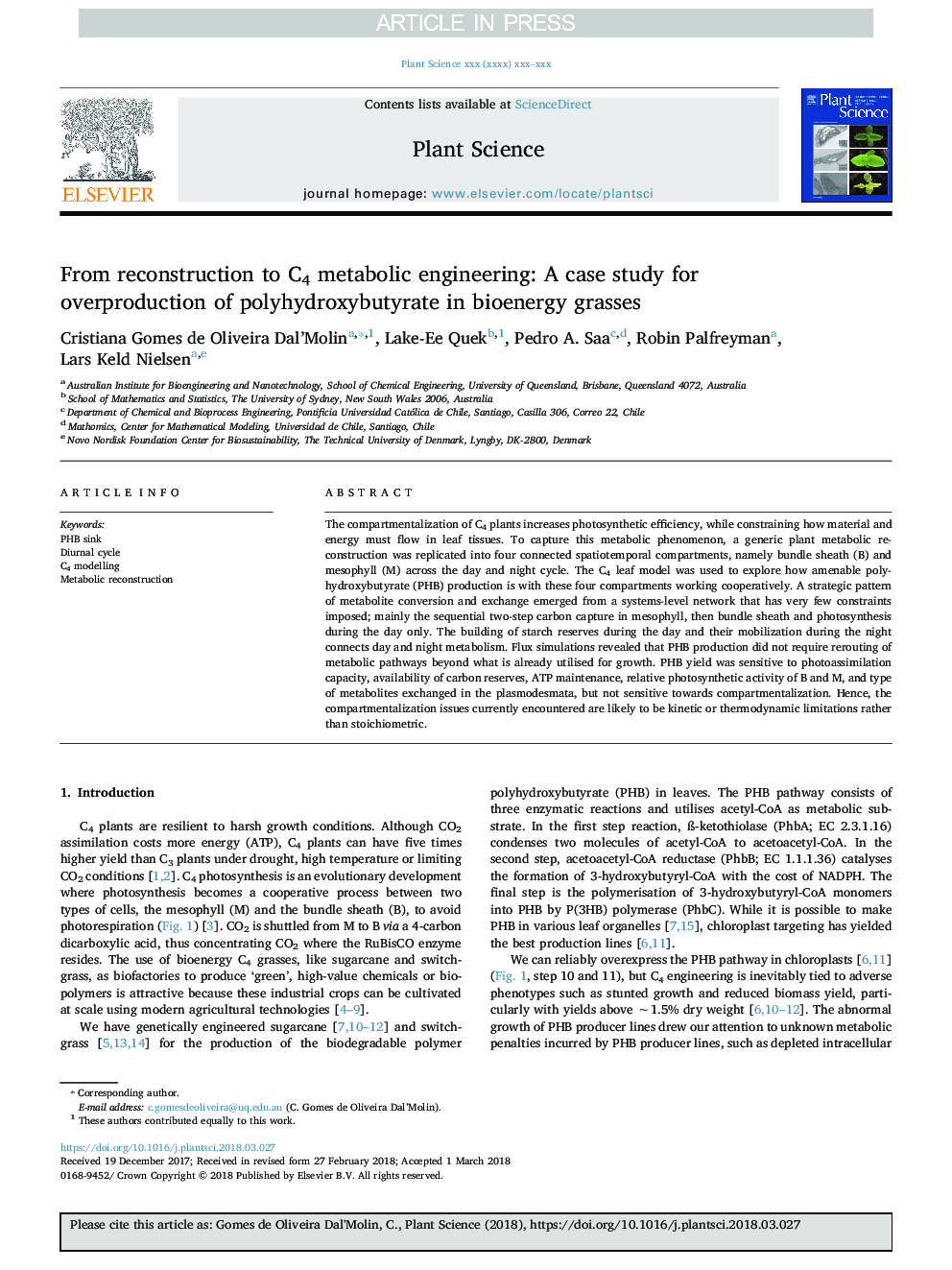| کد مقاله | کد نشریه | سال انتشار | مقاله انگلیسی | نسخه تمام متن |
|---|---|---|---|---|
| 8356320 | 1542016 | 2018 | 11 صفحه PDF | دانلود رایگان |
عنوان انگلیسی مقاله ISI
From reconstruction to C4 metabolic engineering: A case study for overproduction of polyhydroxybutyrate in bioenergy grasses
دانلود مقاله + سفارش ترجمه
دانلود مقاله ISI انگلیسی
رایگان برای ایرانیان
موضوعات مرتبط
علوم زیستی و بیوفناوری
علوم کشاورزی و بیولوژیک
دانش گیاه شناسی
پیش نمایش صفحه اول مقاله

چکیده انگلیسی
The compartmentalization of C4 plants increases photosynthetic efficiency, while constraining how material and energy must flow in leaf tissues. To capture this metabolic phenomenon, a generic plant metabolic reconstruction was replicated into four connected spatiotemporal compartments, namely bundle sheath (B) and mesophyll (M) across the day and night cycle. The C4 leaf model was used to explore how amenable polyhydroxybutyrate (PHB) production is with these four compartments working cooperatively. A strategic pattern of metabolite conversion and exchange emerged from a systems-level network that has very few constraints imposed; mainly the sequential two-step carbon capture in mesophyll, then bundle sheath and photosynthesis during the day only. The building of starch reserves during the day and their mobilization during the night connects day and night metabolism. Flux simulations revealed that PHB production did not require rerouting of metabolic pathways beyond what is already utilised for growth. PHB yield was sensitive to photoassimilation capacity, availability of carbon reserves, ATP maintenance, relative photosynthetic activity of B and M, and type of metabolites exchanged in the plasmodesmata, but not sensitive towards compartmentalization. Hence, the compartmentalization issues currently encountered are likely to be kinetic or thermodynamic limitations rather than stoichiometric.
ناشر
Database: Elsevier - ScienceDirect (ساینس دایرکت)
Journal: Plant Science - Volume 273, August 2018, Pages 50-60
Journal: Plant Science - Volume 273, August 2018, Pages 50-60
نویسندگان
Cristiana Gomes de Oliveira Dal'Molin, Lake-Ee Quek, Pedro A. Saa, Robin Palfreyman, Lars Keld Nielsen,